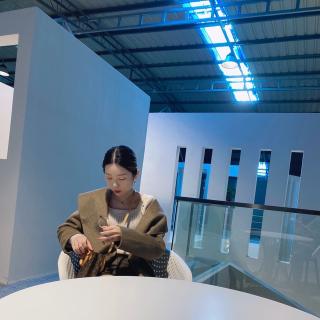
【新春特辑】Traditions in Traditional Chinese New Year 中国新年习俗 Part 1
2017-01-25 10'47''
主播: 千年刚刚满三岁
9001 353
介绍:
Today we&`&ll be taking you through some of the most important traditions of Chinese new year and historical background.
今天我们将带你领略一些最重要的中国新年的传统和历史背景。
We will look at some of the legends behind Chinese new year and how to celebrate it.
我们将看看中国新年背后的一些传说和如何庆祝它。
Here in the US and Chinese across the world.
在美国和世界各地的中国人。
The Chinese have specific way to celebrate their new year.
中国人用特殊的方式来庆祝新年。
If you walk down the street in Chinatown during Chinese New Year, you see a variety of ancient traditions such as red banners, firecrackers and lion dance performances, streets are filled with lively celebration.
如果你在中国新年期间走上唐人街,你会看到各种各样的古老传统,如红色横幅,鞭炮和舞狮表演,街道上充满了活泼的庆祝活动。
However, legend has said that the new year has not always been a time of festivity.
然而,传说新年并非一直是欢庆的日子。
An Asian Chinese story told a chilly start to this festive holiday, it begins with an ancient Chinese beast called Nian.
一个亚洲的中国故事讲诉了这个喜庆节日的寒冷起源,它始于一个叫“年”的中国古代怪兽。
Every New Year Nian would rise from swelling in the sea to ravage Chinese village in livestock and hurting people.
每一年新年,“年”会从上涨的海里出来,在中国村庄里肆虐牲畜、伤害人类。
The villages soon found out from a wise gray-haired old man that the only way to scare the beast away was to set off firecrackers and light lamps and to hang red banners on each door.
明智的村庄很快从一位头发花白的老人那里得知,吓跑野兽的唯一方法是放鞭炮,点灯和在每个门上挂红色横幅。
As the story goes, this was the beginning of a tradition that would last thousands of years.
据说,这就是将持续数千年传统的开始,。
So this story leads to the creation of many of other traditions for celebrating Chinese New Year, let&`&s take a look at some of these traditions.
这个故事产生了许多其它的为庆祝中国新年的传统,让我们来看看其中的一些传统。
We&`&re gonna try now tells us why firecrackers are so important to kick off the new year celebrations.
现在我们要试着讲述鞭炮为什么在新年庆祝活动中如此重要。
For many Chinese, New Year celebrations will not be the same without firecrackers.
对许多中国人来说,新年庆祝活动没有鞭炮是大不一样的。
These tradition originates from ancient China as a Chinese was the first to invent gunpowder as early as during the ninth century.
这些传统源于中国古代,作为中国第一个发明火药早在九世纪期间。
It was believed that ghost, bad spirits and even the legendary monster called Nian that came out attack people during a new year were afraid of loud noises, so the Ancient Chinese would fill bamboo stems with gunpowder to make smell explosions to drive away Nian, evil spirits and bad luck.
据说鬼魂、恶灵甚至传说中的怪兽“年”,“年”攻击人在新的一年害怕噪音,所以中国古代竹茎充满火药气味爆炸赶走年,恶灵,坏运气。
Another popular traditional belief was that the noise from the firecrackers would awaken the sleeping dragon that fly across the sky, bringing plentiful rain for their crops.
另一个流行的传统信仰是鞭炮的声音唤醒了沉睡的龙,它飞过天空,给庄稼带来充足的雨水。
Today in most countries for safety issues, it is illegal for individuals to light firecrackers, but these tradition persist to make it safe and enjoyable for the public.
今天在大多数国家,由于安全问题,个人放鞭炮是违法的,但是这些传统依旧在安全的愉悦着大众。
Various Chinese organizations have organized firecrackers celebrations a spot at the annual cultural activities.
各式各样的中国组织在一年一度的文化活动上组织鞭炮庆祝活动。
Since 2000, the Chinese-American community in New York City has been organizing the annual Chinatown Lunar New Year firecrackers ceremony that attracts more than 200,000 visitors.
自2000年以来,纽约华人社区组织了年度唐人街春节鞭炮仪式,吸引了超过20万游客。
Another way that Chinese used to scare off evil monsters at the start of the new year is the lion dance, let&`&s now find out more about this Chinese tradition.
中国人用来吓走邪恶怪物的另一种方式是在新年伊始舞狮,现在让我们来看看关于这个中国传统的更多信息。
The lion dance is a familiar sight on the streets of Chinatown during Chinese New Year celebrations.
舞狮在唐人街街头的中国新年庆祝活动中是一个熟悉的景象。
This is a traditional lively dance that combines art, history and culture, with the rigours of Chinese martial arts movements.
这是一种传统的生动的舞蹈,把艺术、历史和文化与中国武术运动的苛刻相结合。
Two dancers form the lion, one holds the lion&`&s head revolves the front part of the lion&`&s body while the second dancer forms the body and the tail of the lion.
两个舞者组成了狮子,一个扛着狮子的头旋转着狮子的身体前部,而第二个舞者控制狮子身体和尾巴。
Together they plumps about to the rhythm of the drums, symbols and the gong.
他们一起要有节奏的踏着鼓声,标志和锣。
The lion symbolizes courage, strength and authority.
狮子象征着勇气、力量和权威。
According to traditional Chinese belief, loud music can frighten away ghosts, evil spirits and the “Nian", the Chinese legendary monster that would come out to attack and kill people during the New Year.
根据中国传统信仰,大声的音乐可以吓走鬼魂、恶灵和"年"——中国富有传奇色彩的怪物,在新年期间会攻击并杀死人。
Today the lion dance is performed to usher in a new and prosperous year, it involves for ritual of the lion plug in greens for "caiqing".
今天,舞狮表演用来迎接新的繁荣的一年,它涉及的仪式由狮子插入绿色来采青。
The Chinese words "Cai" is &`&plug&`& sounds like the word for wealth also pronounces "Cai", thus a typical performance involve the lion plugging vegetables that are placed on the tail or hang for the ceiling with a red packet outside for business premisses.
中国话说采——“塞”这个词听起来像是财,因此采青的一个典型表演包括狮子将蔬菜包上一个红色的袋子放在尾部或挂在天花板来祈盼商业前景。
This all special ritual is believed to bring in good luck and wealth to the business.
所有这些特殊的仪式被认为会对业务带来好运和财富。
If you walk around a Chinese village during the New Year, you&`&ll see a lot of red banners stuck on people&`&s doors. Now these banners are messages of good fortune for the new year.
如果你在新的一年里走在一个中国村庄,你会看到人们的门前贴着很多红色横幅。这些条幅是新年好运的话语。
An old Chinese tradition hanging red banners for New Year was one of the methods used to scare away the beast "Nian".
挂红色横幅是一个古老的中国新年传统,是用来吓跑怪兽“年”的其中一种方法。
Now the banner is contained auspicious messages with will and harmony when the new year comes around.
现在横幅包含新的一年到来时的吉祥与和谐的消息。
Some of the banners contain corresponding Chinese poetic couplets known as "Chunlian" or spring couplets, these placed on the entrance of houses during the Chinese New Year.
包含相应的一些中国诗意的对联称为春联或春天的对联,它们在中国农历新年期间被放在房子的入口。
These Chinese couplets which paste not either side of a doorway or sometimes also accompanied by a third idiom located on the top at the door.
这些中国对联不仅粘贴在门口两边,有时也伴随着位于门口顶部的第三个成语。
Here is a common "Chunlian" about the coming spring :"冬去山明水秀”, winter is gone, the mountain is clear and water sparkles.
这是一种关于即将到来的春天的常见的一幅春联:"冬去山明水秀”,冬天过去了,山上是明确的和河流闪烁。
spring comes, bird sing and flowers fragrant.
春天来了,鸟儿歌唱,鲜花芬芳。
the whole earth returns to spring.
整个世界迎来了春天。
Another common banner is the single character spring- "chun" or good fortune "fu" except they are posted upside down, this comes with play on words.
另一个常见的横幅是单个字符的春天——“春”或好运“福”除了颠倒着贴,这是一种文字游戏。
The Chinese character that means backwards or upside down "dao" is pronounced the same way as the character for arrive.
汉字这意味着向后或颠倒的“倒”和“到”的发音一样。
BGM: Rob Simonsen - Red
END: Elina - Lovely Day
大家还在听

